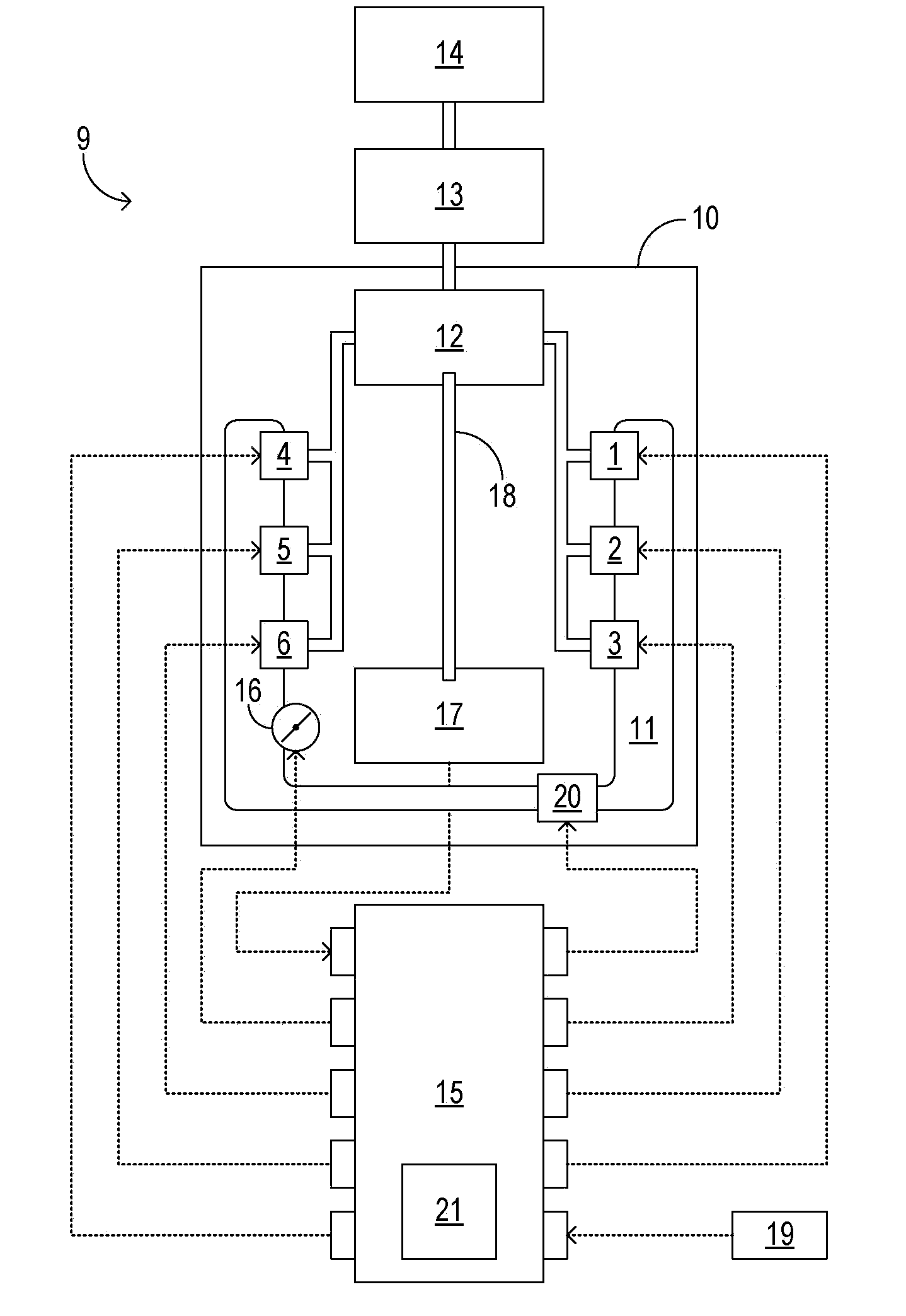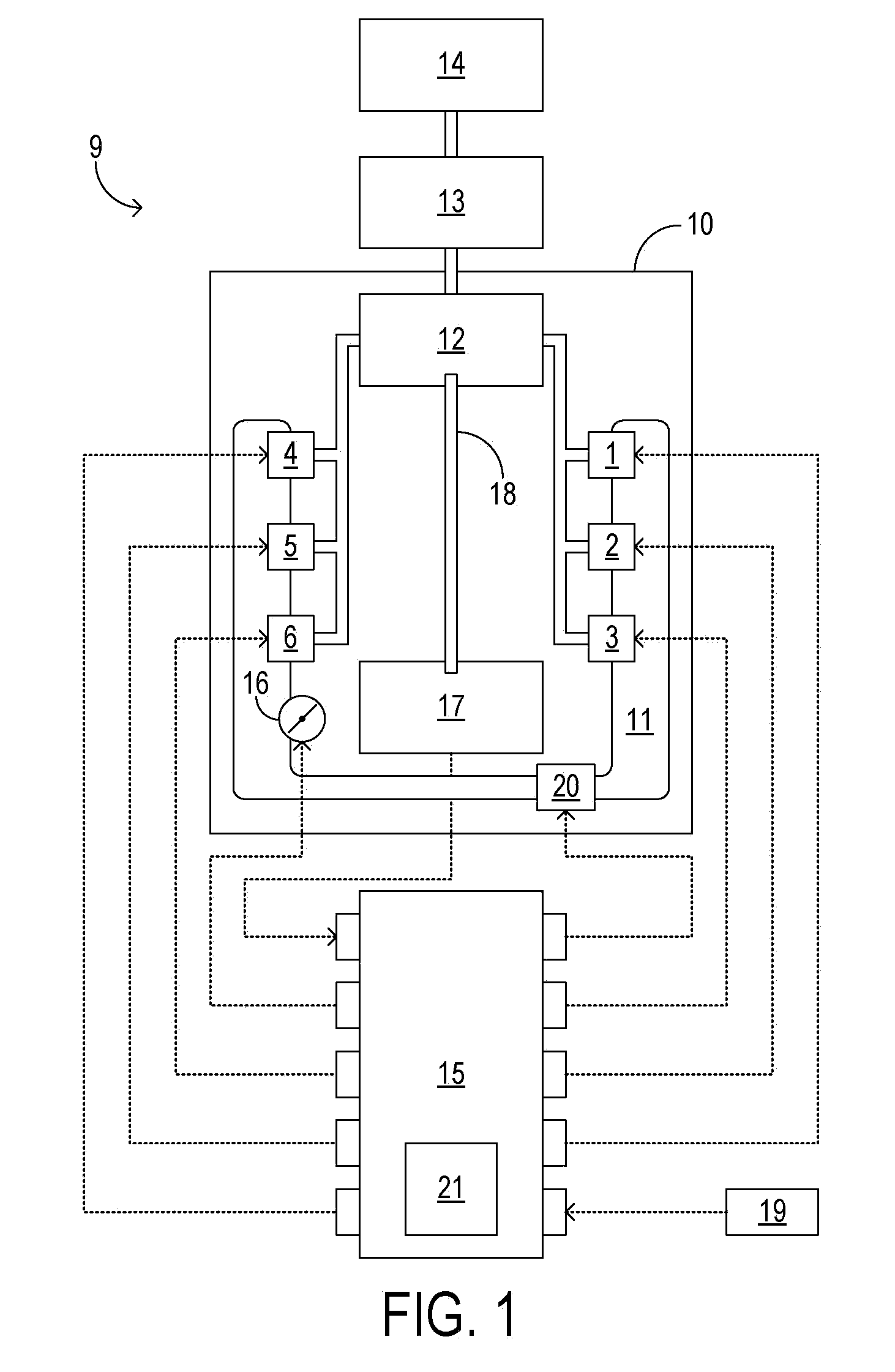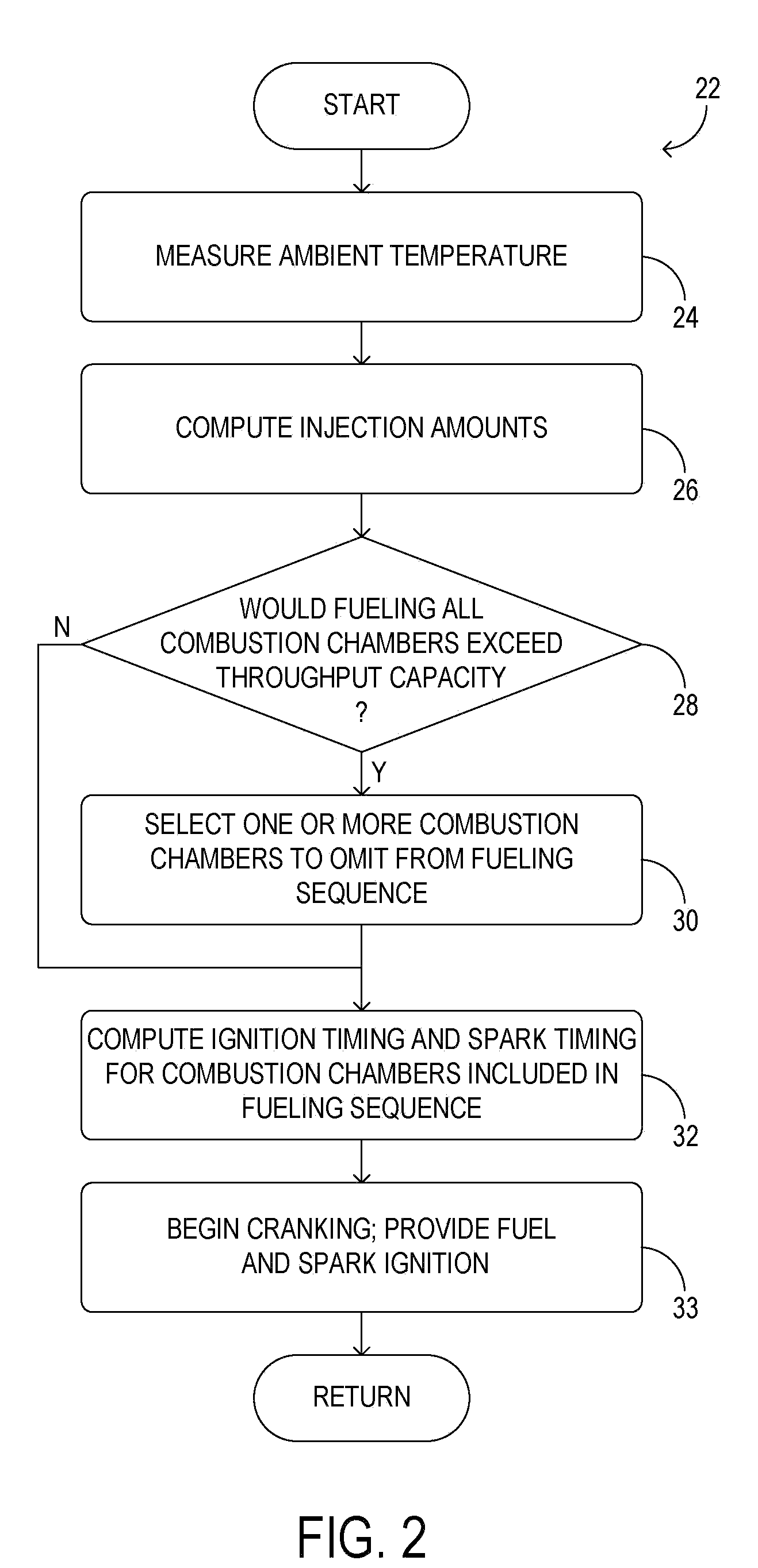Cold-start reliability and reducing hydrocarbon emissions in a gasoline direct injection engine
a technology of gasoline direct injection and cold-start reliability, which is applied in the direction of engine starters, electric control, instruments, etc., can solve the problems of reducing fuel economy, and affecting the reliability of cold-starting
- Summary
- Abstract
- Description
- Claims
- Application Information
AI Technical Summary
Benefits of technology
Problems solved by technology
Method used
Image
Examples
Embodiment Construction
[0020]FIG. 1 shows example engine system 9 in schematic detail. The engine system includes GDI engine 10. In the illustrated embodiment, the engine comprises six combustion chambers arranged in a V-6 configuration. The combustion chambers are provided intake air via intake manifold 11 and are provided fuel via fuel injectors 1-6, which are directly coupled to the combustion chambers. In other embodiments equally consistent with this disclosure, the engine may have a different configuration and / or a different number of combustion chambers and fuel injectors.
[0021]Continuing in FIG. 1, each of the fuel injectors 1-6 is provided pressurized fuel via high-pressure pump 12, which may be an engine-driven pump. In the illustrated embodiment, the high-pressure pump is mechanically coupled to engine 10. The high pressure pump is supplied fuel by lift pump 13, which draws fuel from fuel tank 14. Further, each of the fuel injectors is operatively coupled to, and configured to receive a control...
PUM
 Login to View More
Login to View More Abstract
Description
Claims
Application Information
 Login to View More
Login to View More - R&D
- Intellectual Property
- Life Sciences
- Materials
- Tech Scout
- Unparalleled Data Quality
- Higher Quality Content
- 60% Fewer Hallucinations
Browse by: Latest US Patents, China's latest patents, Technical Efficacy Thesaurus, Application Domain, Technology Topic, Popular Technical Reports.
© 2025 PatSnap. All rights reserved.Legal|Privacy policy|Modern Slavery Act Transparency Statement|Sitemap|About US| Contact US: help@patsnap.com



